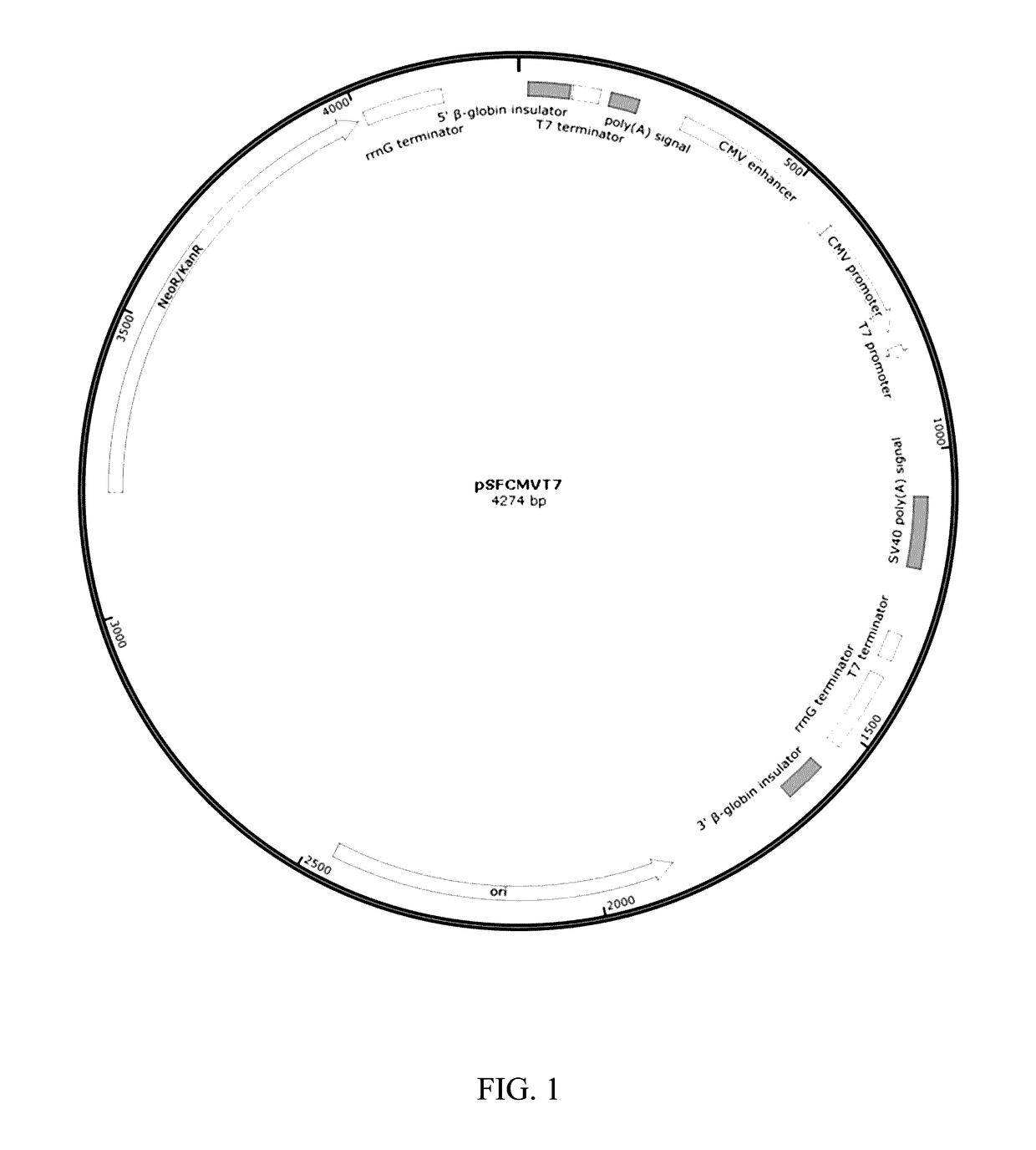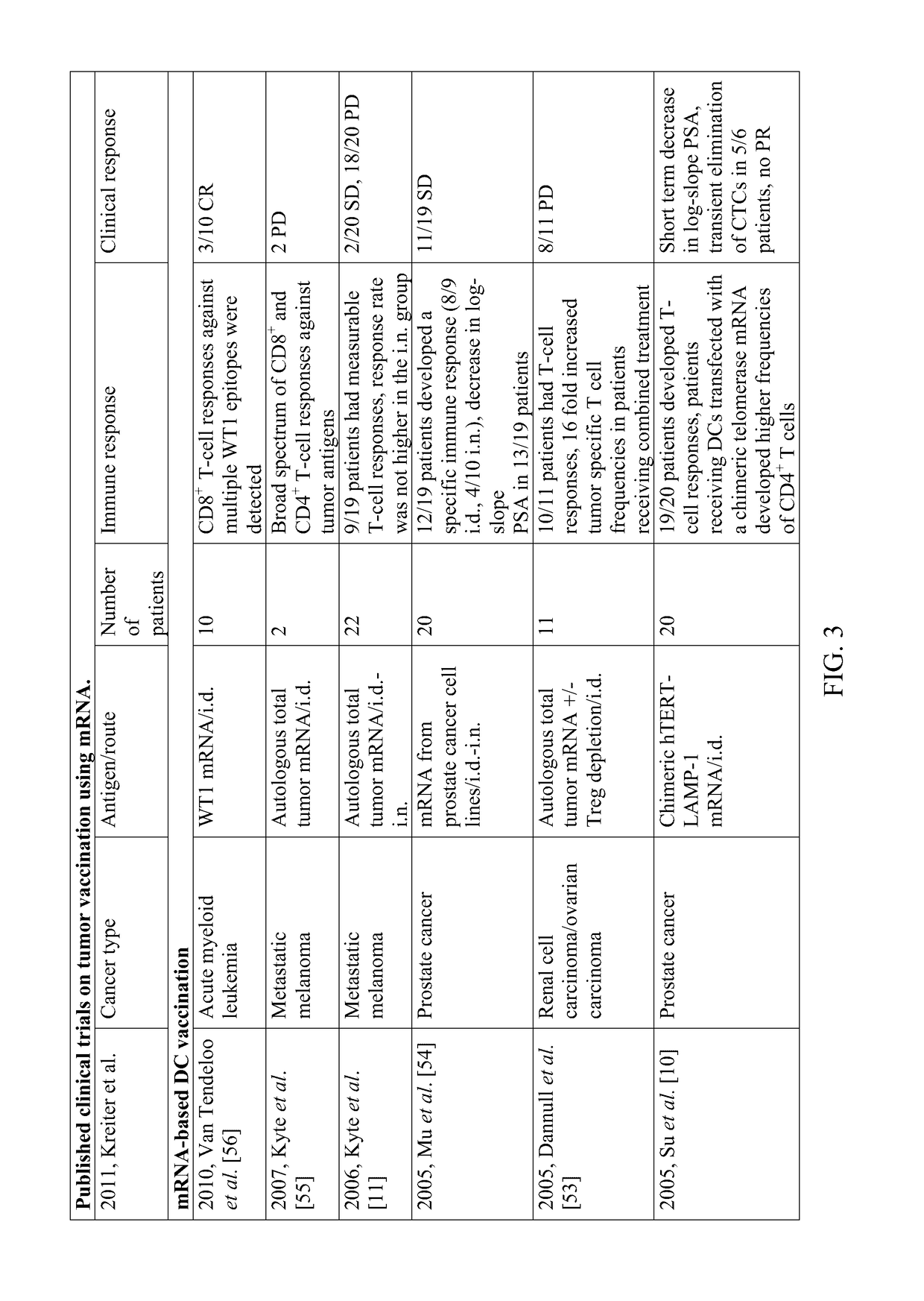Multi-indication mRNA cancer immunotherapy
a cancer immunotherapy and multi-indication technology, applied in the field of vaccines, can solve problems such as detrimental effects
- Summary
- Abstract
- Description
- Claims
- Application Information
AI Technical Summary
Benefits of technology
Problems solved by technology
Method used
Image
Examples
example 1
Autologous mRNA Vaccine for Canine Lymphoma
[0060]A 75 lb. male neutered Rhodesian Ridgeback, presents to his veterinarian with swollen mandibular and inguinal lymph nodes. The patient has a fine needle aspirate performed on one of the enlarged nodes. Upon review by the pathologist he is diagnosed with low grade diffuse lymphoma.
[0061]The patient's owner elects to pursue immunotherapy treatment instead of chemotherapy and steroids, due to the minimal side effects reported in immunotherapy treatments. The veterinarian excises the right mandibular lymph node while the patient is under general anesthesia. The tissue sample is shipped overnight for laboratory processing.
[0062]Upon receiving the tissue sample at the lab the following is performed: 1) the travel medium is checked for any bacterial contamination, 2) the tissue dimensions are measured, 3) the intact lymph node is aspirated repeatedly using several boluses of wash medium to release the tumor cells, and 4) the aspirated cells ...
example 2
Direct mRNA Vaccine for Equine Melanoma
[0067]A 15 year old Andalusian, presented to her veterinarian with black lesions on her neck, mane and in the perianal area. Upon review of a fine needle aspirate the pathologist diagnoses the patient with melanoma. The owner elects to pursue immunotherapy treatment due to the complicated nature of excising the perianal lesion on the patient.
[0068]Three vaccine doses are prepared containing 100 μg mRNA in 100 μL sterile nuclease free H2O. The three doses and three needle-free injection devices (J-Tip) are shipped to the veterinarian. Three of the patient's lesions are chosen to receive the treatment course, a total of 300 μg mRNA per time point. Every two weeks three more doses are shipped to the veterinary clinic as previously done and each dose is administered to the same three lesions using the J-Tip device. The patient receives a total of six vaccine doses per lesion.
[0069]Blood samples are collected prior to initiation of the vaccine serie...
example 3
Overview of Methods for emmL mRNA Creation
[0072]Methods Overview:
[0073]Restriction Enzyme Digestion of Vector and Insert
[0074]To create the appropriate recombinant plasmid for optimal mRNA production, a plasmid backbone including dual prokaryote and eukaryote promoters, untranslated 3′ and 5′ regions, and a selective marker was used. A vector of this type; for example, pSFCMVT7, has multiple features that aid in the production and stabilization of the mRNA encoding an antigenic M-like protein, such as Emm55. Both the vector pSFCMVT7 and the insert containing plasmid pAc / emmL were cut using restriction enzymes SacI and EcoRV. Refer to FIGS. 1 and 2 for plasmid maps.
[0075]DNA Fragment Separation with Gel Electrophoresis
[0076]Once the restriction digestion was performed with the appropriate enzymes, the DNA fragments were isolated through gel electrophoresis. A reference DNA ladder is run with both the digestion reactions to assess DNA band lengths, thus aiding in identification of the...
PUM
| Property | Measurement | Unit |
|---|---|---|
| concentration | aaaaa | aaaaa |
| temperature | aaaaa | aaaaa |
| volume | aaaaa | aaaaa |
Abstract
Description
Claims
Application Information
 Login to View More
Login to View More - R&D
- Intellectual Property
- Life Sciences
- Materials
- Tech Scout
- Unparalleled Data Quality
- Higher Quality Content
- 60% Fewer Hallucinations
Browse by: Latest US Patents, China's latest patents, Technical Efficacy Thesaurus, Application Domain, Technology Topic, Popular Technical Reports.
© 2025 PatSnap. All rights reserved.Legal|Privacy policy|Modern Slavery Act Transparency Statement|Sitemap|About US| Contact US: help@patsnap.com



